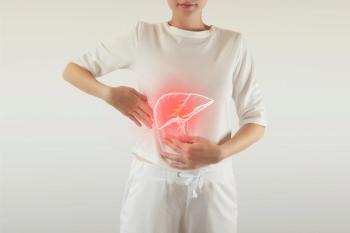
Fever and cough persist, a faint rash comes on: Another viral syndrome?
As the attending on the community hospital's general pediatric service, you're called in this afternoon to see a 9-year-old girl who was admitted the evening before for chief complaints of a fever (axillary temperature, 102° F to 103° F) and cough of five days' duration. She has been observed to have a dry hacking cough, and broke out in a faint rash after admission. Can you solve this Pediatric Puzzler?
As the attending on the community hospital's general pediatric service, you're called in this afternoon to see a 9-year-old girl who was admitted the evening before for chief complaints of a fever (axillary temperature, 102° F to 103° F) and cough of five days' duration. She has been observed to have a dry hacking cough, and broke out in a faint rash after admission.
Your patient was seen, in the company of her mother, twice in the emergency department of this South Texas hospital during the five-day period, and was started on an oral antibiotic for a presumed but unspecified infection. Despite the antibiotic, fever has persisted.
You take additional history. No diarrhea, vomiting, or dysuria, but her parents report that her appetite is diminished and her urine has been much darker in color than usual. She has developed occasional chills as the fever rises. She has no history of redness of the eyes or joint pain.
The patient has not traveled outside Texas in the past few months. Her mother reports that the girl's father and a sibling have had a "cold" recently. The new school year started about one month ago; she is performing well academically in the fourth grade.
The medical history is unremarkable, without previous hospital admissions. She has a vague history of an "anxiety attack" a few months ago; you make a mental note to check this out with the referring family physician.
On examination, the girl certainly does not appear ill. She is cheerful and almost chatty sitting up in bedbut she does have a temperature of 103° F. Heart rate is 80/min; respiratory rate, 22/min. Blood pressure is 94/58 mm Hg.
Mucous membranes are quite moist (she has been receiving intravenous fluids for about 12 hours). The pharynx does show slight erythema but no tonsillar enlargement or exudate. The conjunctivae are not injected. The tongue is coated but lacks a strawberry-like appearance. No cracking or redness of the lips. The neck is supple, without palpable cervical lymph nodes.
The chest is clear to auscultation; the cardiovascular exam is unrevealing. You find no meningeal signs, and the central nervous system exam is normal. The belly is soft, and the edge of the mildly tender liver is palpable 2 cm below the right costal margin. The rest of the abdominal exam is unremarkable.
You do observe a faint, pink, maculopapular rash on her trunk and legs in crops about 3.5 cm in diameter, but see only about three lesions. Capillary refill time is two seconds.
Some possibilities are benign, some are not so. . . .
Your assessment at this point is of a nontoxic-appearing child who has a febrile illness but no focus of infection. Laboratory studies, which had already been ordered by the referring physician, include a complete blood count that reveals a normal white blood cell count (7.2 x 103/µL) with 84% neutrophils and a platelet count that is borderline low (145 x 103/µL). Serum chemistry test results are more noteworthy: There is a slightly low serum albumin level (6.3 g/dL), and elevated serum bilirubin (1.8 mg/dL), asparate aminotransferase (151 U/L), and alanine aminotransferase (145 U/L) levels raise the possibility of viral hepatitis. A panel for hepatitis viruses A, B, and C is, however, negative.
Your patient is not in the typical age group for Kawasaki disease, yet she has had a fever for five days and has a rash, however undistinguished it is. On the other hand, there is no evidence of other features of this disease, such as oral changes and cervical lymphadenopathy, and the sedimentation rate, which, typically, is markedly elevated in the early phase of Kawasaki disease, is only 24 mm/hr.
The most likely answer? A rather nebulous and catch-all diagnosis of "viral syndrome," it seemsand one that you think will likely remain unidentified. Mild transaminase abnormalities do suggest that finding. You discuss the possibilities with the child's physician and the mother and offer a plan of hydration and acetaminophen while the illness runs its course.
A fever that won't abate
The next day, however, the child's temperature reaches 104.5° F. This illness is quite possibly caused by a virus, but you decide to take a history again to be sure that nothing has been missed. For one thing, you have been considering exotic infections, including diseases transmitted by lice. So it comes as a shock that, as you interview the patient's mother and share your thoughts, she asks, "It can't be typhus, could it?"
Why is she concerned about typhus in particular, you ask? Because a relative who had a similar presentation was recently given that diagnosis, she tells you. On further questioning, you learn that your patient was bitten by "a lot" of fleas about two weeks agonot an unusual event, you acknowledge, given that this is South Texas and your experience has been that it is common for pets to move freely in and out of the house and thereby bring infestations of fleas inside. The patient and her family do not have pets but had visited relatives who own cats at about the time of the reported flea bites.
You order an antibody test for the causative agent of typhus, Rickettsia typhi; unfortunately, this is a "send-out" test and the result may take as long as a week to return. But the more you read about typhus, the more it seems to fit the picture. Your reading also indicates that empiric doxycycline is an appropriate treatment before serologic confirmation when clinical suspicion exists. You start IV doxycycline at 2.2 mg/kg of body weight every 12 hours.
The next day, the patient defervesces! Her parents are happy with the outcome but request transfer to a regional children's hospital to allay their anxiety. The transfer is made, but the patient is discharged the next day on doxycycline because she is doing well.
One week later, the child's physician calls to inform you that he has seen the girl at a follow-up visit and that she has no complaints. Somewhat anticlimactically, the R typhi antibody test returns positive: at 1:64 for immunoglobulin G and 1:128 for immunoglobulin M. A test for antibody to Rickettsia rickettsii, the causative agent of Rocky Mountain spotted fever, is negative.
Fleas, rats, and cats
Consider typhus in the differential diagnosis when a high fever lacks a focus, especially when the illness appears to be a "viral syndrome" with a relatively normal CBC and a slight elevation of liver enzymes. Although murine typhus typically occurs in Texas and southern California, cases have occurred in most other states sporadically. Historically, typhus has been associated with fleas carried by rodents, but recognition is growing that fleas of cats can act as hosts: A recently discovered rickettsial agent that causes flea-borne typhus has been associated with cat fleas.1 (Given the ubiquity of domestic cats, might the true incidence of the disease be underestimated based solely on the number of diagnosed cases?)
Four types of infection are labeled "typhus":
epidemic (louse-borne) typhus
endemic (murine) typhus
scrub typhus
recrudescent louse-borne typhus (Brill-Zinsser disease)
The geographical distribution, causative organism, arthropod vector, and vertebrate reservoir of these subtypes are listed in the table.2
Typhus and its disease subtypes
The public health impact of typhus on lost lives and productivity is largely unmeasured but is suspected to be high worldwide.3 Often underrecognized and believed to be clinically mild, murine typhus may, in fact, occur as an epidemic or with high prevalence in certain geographic regions.48
In the early 1940's in the United States, 2,000 to 5,000 cases of murine typhus were reported annually. Most cases occurred in southeastern and Gulf Coast states. Incidence declined once rat control programs were instituted after World War II. Today, murine typhus is not reportable in most states, and only 60 to 80 cases are reported annually to the Centers for Disease Control and Prevention. In recent years, approximately 80% of reported cases are from Texas.6
The triad of fever, headache, and rash observed during the appropriate seasongenerally, spring and summershould alert you to consider typhus as the cause of illness. Seek out relevant historical features, such as an attached tick, flea bites, recent camping, or occupational exposure. Although the rat flea (Xenopsylla cheopis) has long been implicated as the vector, the classic rat-flea-rat cycle has, in some locales, been replaced by a peridomestic cycle that involves cats, dogs, and opossums and their fleas. R typhi in flea feces that have deposited on the skin as part of the flea feeding reflex are inoculated into the pruritic flea bite wound. Remember, too, that murine typhus can occur in travelers returning from regions of endemic disease worldwide.
Pathologic findings indicate a systemic endothelial infection similar to that of Rocky Mountain spotted fever (RMSF). Mild or moderate hepatic injury is a frequent finding in murine typhus, probably resulting from multifocal infection of hepatic sinusoidal and portal endothelium with so-called bystander hepatocyte damage.7
The presentation of typhus is often nonspecific, with fever (96%), severe headache (45%), chills (44%), myalgia (33%), and nausea (33%) being the most frequently reported early findings. Incubation is one to two weeks. A rash is seen in only 18% of patients at presentation, but approximately 50% develop one over the course of illness. Fever usually continues, and nausea, anorexia, vomiting, and cough develop in as many as one third of patients. Neurologic signs and symptoms can include confusion, stupor, and seizures, although these are uncommon.7 In one case report, fever occurred only at night, whereas daytime activities were unaffected.8
Laboratory findings are nonspecific and include early mild leukopenia, followed, in only about one third of cases, by leukocytosis. The most common (90% of cases) laboratory abnormality is a mild or moderate elevation of liver enzymes, as occurred in your patient. Hypoproteinemia and hypoalbuminemia may also occuragain, as seen in your patient. More definitive is serologic diagnosis with an indirect fluorescent antibody assay, a latex agglutination assay, or a solid-phase immunoassayall of which utilize specific antigen to R typhi. The Weil-Felix reaction (an agglutination test using antigens to Proteus vulgaris) is insensitive and should be considered obsolete.
Once the diagnosis is made and therapy is instituted, the prognosis is often good. Most patients defervesce rapidly.
The list of differential diagnoses of this disease is quite large. The reduction in the prevalence of murine typhus has seen a parallel decrease in accurate early diagnosis. Most patients are initially investigated for fever of undetermined origin. Other diagnoses to be considered in a patient who may have murine typhus include pneumonia, gastroenteritis, meningoencephalitis, and cerebrovascular accident. Among other rickettsioses, RMSF may resemble endemic typhus most closely. Historical features may help in such cases: Murine typhus tends to occur in urban and suburban environments, with but a small percentage of patients recalling having been bitten by a flea; RMSF occurs in a rural setting with a larger percentage reporting a tick bite.
Murine typhus is treated with a tetracycline; success with fluoroquinolones has also been reported.9 Recommended regimens include oral or IV doxycycline, 2.2 mg/kg every 12 hours (maximum, 300 mg/24 hr); oral tetracycline, 25 to 50 mg/kg every 24 hours in four divided doses (maximum, 2 g/24 hr); and chloramphenicol, 50 to 100 mg/kg every 24 hours in four divided doses (maximum 3 g/24 hr). Therapy should be continued for at least five days or until the patient has been afebrile for two to four days to avoid relapse, especially in patients treated early in the course.10
Prevention of typhus is directed mainly toward control of flea vectors and potential flea hosts. Because the potential for epidemic spread is associated with foci of infected flea infestations, all suspected cases of murine typhus should be reported promptly to the local public health authority. Although usually considered a mild illness, murine typhus may be fatal or severe if misdiagnosed or improperly treated. No vaccine of proven effectiveness is available. Recovery from natural infection confers long-lasting immunity to re-infection.
REFERENCES
1. Schriefer ME, Sacci JB, Jr., Dumler JS, et al: Identification of a novel rickettsial infection in a patient diagnosed with murine typhus. J Clin Microbiol 1994;32:949
2. Dumler JS, Walker DH: Rickettsia typhi (murine typhus), in Mandell GL, Bennet JE, Dolin R (eds): Mandell: Principles Practice of Infectious Diseases, ed 5. Philadelphia Pa., Churchill Livingstone, 2000, p 2034
3. WHO Working Group on Rickettsial Diseases. Rickettsioses: A continuing disease problem. Bull World Health Organ 1982;60:157
4. Brown AE, Meek SR, Maneechai N, et al: Murine typhus among Khmers at an evacuation site on the Thai-Kampuchean border. Am J Trop Med Hyg 1989;92:373
5. Al-Awadi AR, Al-Kazemi N, Ezzat G, et al: Murine typhus in Kuwait in 1978. Bull World Health Organ 1982;60:283
6. Outbreak of murine typhusTexas. MMWR Morb Mortal Wkly Rep 1983;32:131
7. Dumler JS, Taylor JP, Walker DH: Clinical and laboratory features of murine typhus in south Texas, 1980 through 1987. JAMA 1991;266:1365
8. Duffy PE, Le Buillouzic H, Gass RF, et al: Murine typhus identified as a major cause of febrile illness in a camp for displaced Khmers in Thailand. Am J Trop Med Hyg 1990;43:520
9. Raoult D, Drancourt M: Antimicrobial therapy of rickettsial diseases. Antimicrob Agents Chemother 1991;35:2457
10. Endemic typhus, in Pickering LK (ed): Red Book 2003: Report of the Committee on Infectious Diseases, 26th ed. Elk Grove Village Ill: American Academy of Pediatrics, 2003, p 668
DR. GODBOLE is in pediatric practice at Beeville Medical Associates, Beeville, Texas.
DR. SIBERRY is an assistant professor of pediatrics in the divisions of general pediatric and adolescent medicine and pediatric infectious diseases at The Johns Hopkins Hospital, Baltimore.
Newsletter
Access practical, evidence-based guidance to support better care for our youngest patients. Join our email list for the latest clinical updates.














